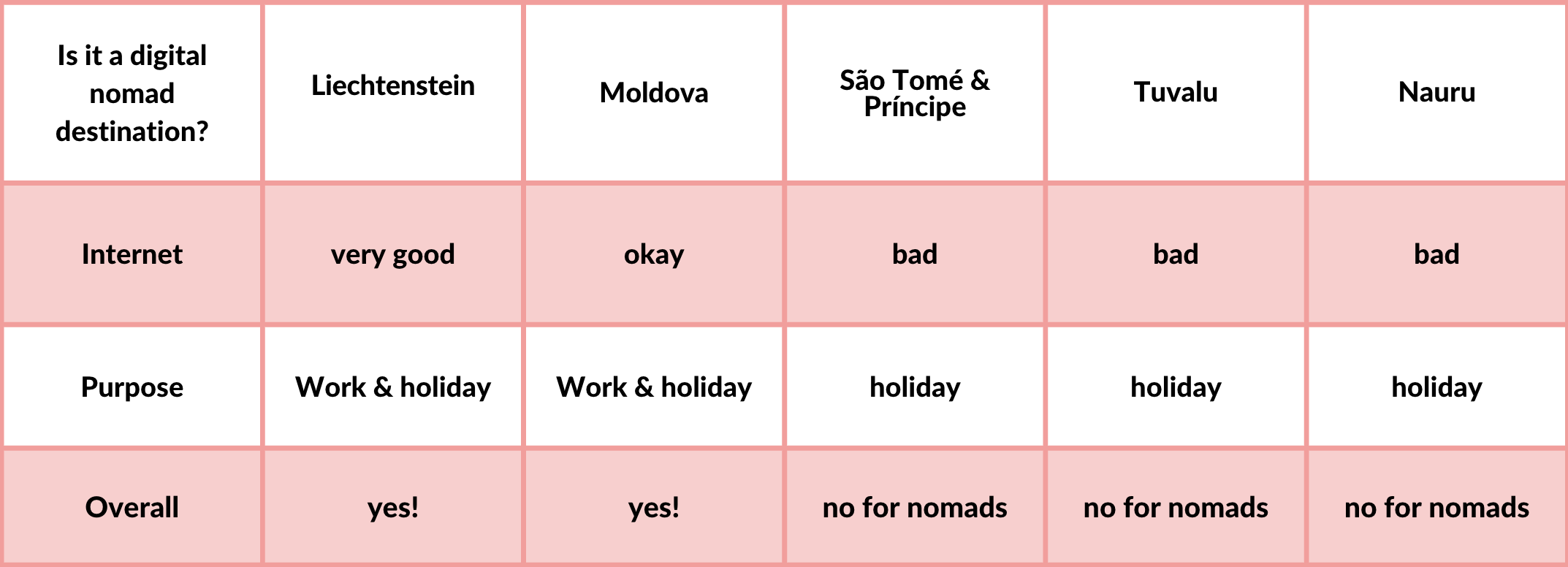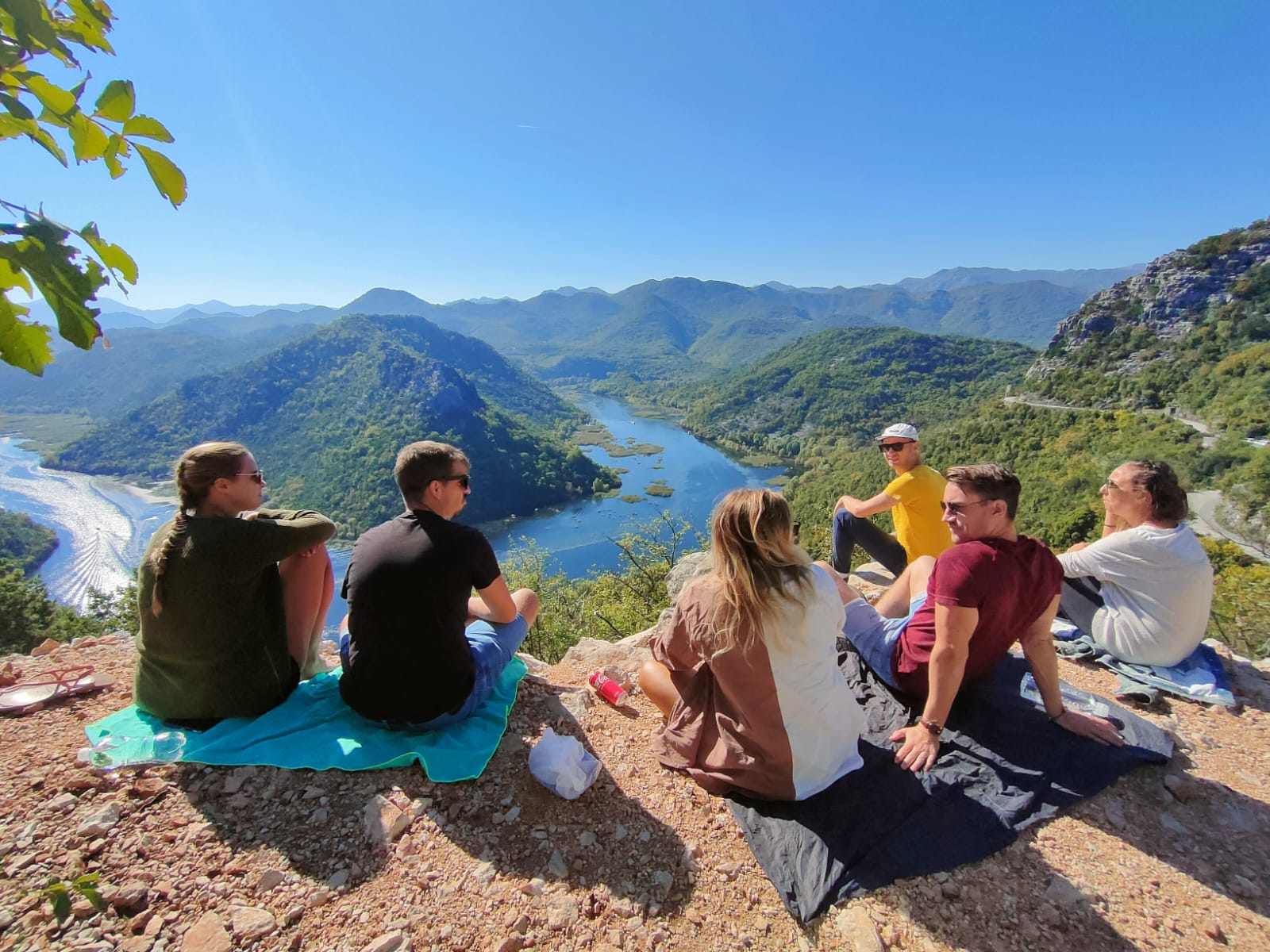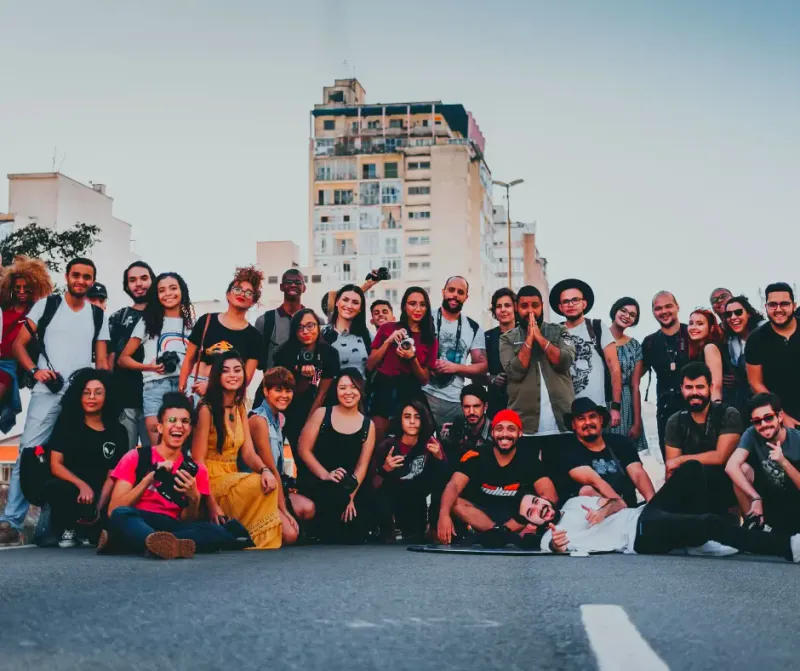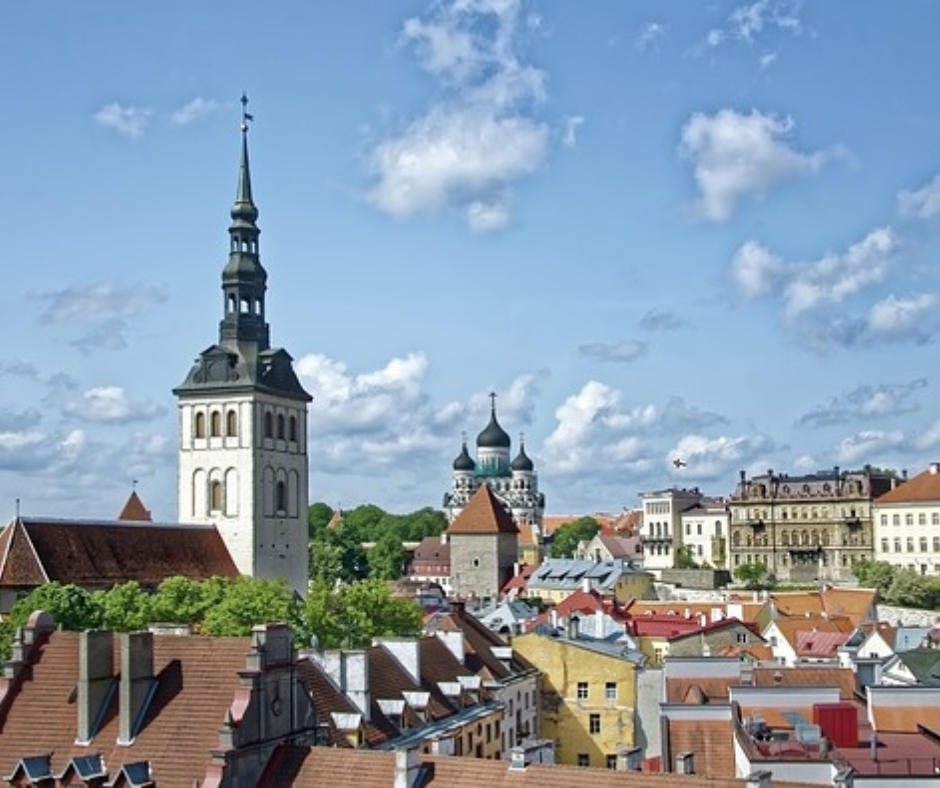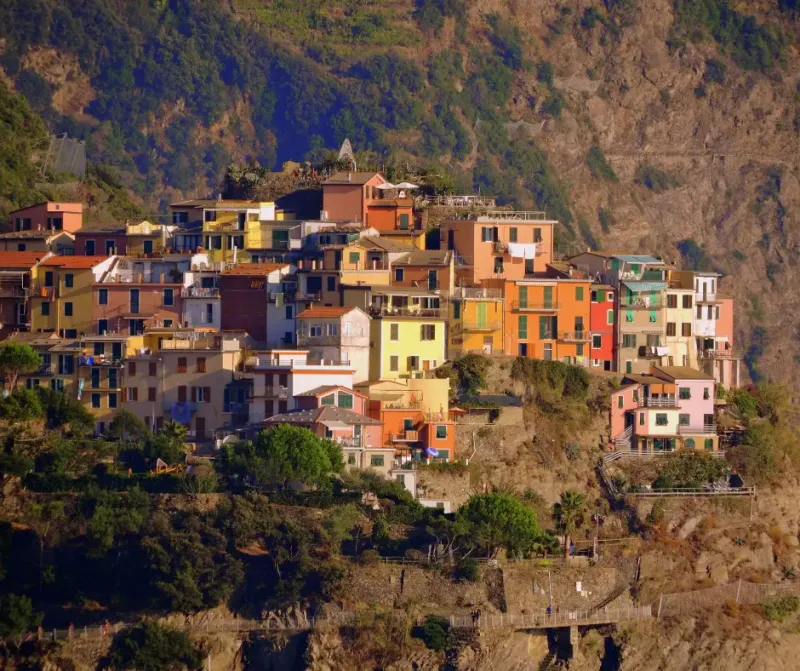It might take a while to get there, and others are so small they are often overlooked: The 5 least traveled countries worth checking out.
The following list introduces you to 5 countries with come with very little tourism, great authenticity, and very little popularity. But sometimes it is just really nice to swim against the tide.
🌱 Travel health insurance wherever you go
#1 Liechtenstein
The Principality of Liechtenstein is located in the center of the European Alps, between Switzerland and Austria. The state counts roughly 38,500 inhabitants. The 160 square kilometers make the country the fourth smallest country in Europe and the sixth smallest country in the world.
With an average of 50,000 tourists per year, Liechtenstein is far behind its potential. Visitors can expect dramatic mountain scenery, authentic Alpine culture, idyllic villages, and entrepreneurial opportunities.
🇱🇮 Entry Requirements
- Visa: If you own a passport from the European Union, you don't need a visa to enter Liechtenstein. Other passport holders need a valid Schengen visa or an exemption.
✈️ How to get to Liechtenstein
- Plane: The closest airport to Liechtenstein is Zurich Airport in neighboring Switzerland. From Zurich, take the train to Sargans and switch to bus line #11.
- Train: There are trains from Austria with a stop in Switzerland (Sargans). At Sargans take bus line #11 to Vaduz. If you bought the Austria Pass or a Global Pass with Eurail, you can enter Liechtenstein by train at no extra charge.
- Bus: You can enter Liechtenstein by bus #11 coming from neighboring Switzerland or Austria.
💡 Good to know
- Internet: The average internet speed in Liechtenstein is 110,97 Mbps download and 94,67 Mbps upload.
- Language: The official language in Liechtenstein is German.
- Currency: The official currency of Liechtenstein is the Swiss franc (CHF). 1 Euro converts to 0.99 CHF.
- People: The current population of Liechtenstein is 38,402. People are welcoming, and kind. Locals rarely lock their doors as the country hasn't reported any serious crime within the last decades.
- Socket type: Type J.
- Air quality: Air quality in Liechtenstein is good.
- Water quality: Yes, you can drink tap water in Liechtenstein.
🌳 Why you should visit Liechtenstein
- Infrastructure: Liechtenstein promotes itself as a service, providing lighting fast internet which is ranked 2nd in the world, modern facilities, safety, and business opportunities. Additionally, Liechtenstein is very well connected with Europe.
- Nature: Dramatic landscape, charming villages, medieval architecture, and overall authentic Alpine experience.
- Culture: Liechtenstein has a rich history, Alpine culture, gorgeous wineries, and a hearty cuisine you should explore.
🚧 What to avoid
- Costs: Similar to Monaco, Andorra, or Luxembourg, Liechtenstein is one of Europe's most expensive countries.
#2 Moldova
Less than 30,000 tourists per year. Nestled between Romania and Ukraine, Moldova is Europe's least visited country. With around 29,000 tourists per year, the country is far behind its possibilities. Moldova is the underdog, underestimated, but might - one day - rise up and shine!
Moldova's unspoiled nature, archaeological treasures, exceptional wine, and budget-friendly lifestyle can be a peaceful home abroad for a few months.
🇲🇩 Entry Requirements
- Visa: EU passport holders don’t need a visa for Moldavia and can stay up to 90 days. Check out the other countries which are exempt from visas too.
✈️ How to get to Moldova
- Plane: The Chișinău Airport (KIV) is located 13 km outside of the Moldavian capital Chișinău. Most European hubs have regular flight connections to the Moldovian capital.
- Train: Traveling from and to Moldova is easy from and to Russia, Ukraine, and Romania.
- Bus: Most European countries are part of an extremely well-connected bus network. Check out Flixbus for your preferred connection.
💡 Good to know
- Internet: Average 29 Mbps download and 46,01 Mbps upload speed, which makes Moldova an okayish place to work from.
- Language: Romanian.
- Currency: Official currency is the Moldovan Leu (L). 1 Euro converts to 20.39 L.
- People: The country has 2,574 million inhabitants, which makes it rather small but cozy.
- Socket type: Type C, Type F.
- Air quality: The air quality of Moldova is moderate.
- Water quality: You should not drink tap water here.
🌳 Why you should visit Moldova
- Internet: Moldova provides decent internet infrastructure, and you can find coworking spaces.
- Cuisine: If you like European and Russian food, you might like Moldovian cuisine. Moldavia has a strong wine culture, and its grapes are the pride of the nation.
- Hospitality: Like many less-frequently visited countries, Moldova is not spoiled by tourists. When visiting, you experience authentic, open-hearted, and kind hospitality which is rare these days.
- Unspoiled nature: Known as the "Garden of the Soviet Union" Moldova has fruitful soil and a mild climate. The landscape is divided into forest, forest-steppe, and steppe.
🚧 What to avoid
- Location: Moldova borders Ukraine which is normally not worth mentioning. But as Putin's war against Ukraine continues, you might want to know about the location of the country.
#3 São Tomé & Príncipe
Less than 35,000 tourists per year. Only a few people have heard about the small island paradise in the Gulf of Guinea. São Tomé, which is an oval-shaped island, is the larger island of the two. Príncipe, which lies 145 km northeast of its sister island, is located around 200 km off the coast of the African state of Gabon.
The islands come with coral formations, snow-white beaches, and an untouched jungle. São Tomé & Príncipe counts around 34,500 visitors per year and is one of the most untouched destinations worldwide.
🇸🇹 Entry Requirements
- Visa: Passport holders of the Schengen area, United States, and Canada do not need a visa and can stay up to 15 days. The visa can be extended to 60 days, in case you want to stay longer than 2 weeks.
✈️ How to get to São Tomé & Príncipe
- Plane: The only way to visit the islands is by plane to São Tomé International Airport. Airlines connecting the island nation to Europe, for example with TAP Air Portugal and STP Airways. If you are traveling from Africa, you can fly directly from Ghana, Gabon, or Angola.
💡 Good to know
- Internet: Average 2.3 Mbps download which is pretty bad.
- Language: The official language is Portuguese.
- Currency: The São Tomé and Príncipe dobra (Db) is the official currency. 1 Euro converts to 24,28 Db.
- People: The island counts 219,100 inhabitants.
- Air quality: Air quality is good.
- Water quality: You should not drink tap water in São Tomé and Príncipe-
👙 Why you should visit São Tomé and Príncipe
- Exotic holiday feeling: Enjoy the full Robinson-Crusoe feeling and travel to a country off the beaten path.
- Nature: The islands are home to lush flora and fauna. Jungle trekking, waterfalls, and tropical beach stays are the main highlights.
- Cuisine: You find an interesting mix of African and Portuguese dishes on the islands.
🚧 What to avoid
- Work work work: Don't come to São Tomé and Príncipe when you need to work. The internet is not the fastest and not reliable. Don't see it as a digital nomad destination but rather a holiday away from the laptop.
- Malaria: Tropical diseases, for example, Malaria, are common in the area.
- Rainy season: The islands have an extensive rainy season between October and May.
#4 Tuvalu
Less than 1,000 tourists per year. Tuvalu is a remote island halfway between Hawaii and Australia and is definitely off the beaten track. The small Polynesian island nation is a member of the Commonwealth, which means King Charles III is head of state. As one of the smallest and most remote nations in the world, Tuvalu is also one of the least developed countries with a non-commercialized environment.
The spectacular marine ecosystems include remote atolls, magnificent lagoons, coral reefs, and colorful underwater life.
🇹🇻 Entry requirements for Tuvalu
- Valid visa: To enter Tuvalu, make sure you have a valid visa. Schengen passport holders can visit the island for one month visa-free.
- Covid-19: Passengers are required to complete a PCR test within 24 hours before flight departure. Visitors must be fully vaccinated at least 14 days prior to travel. A rapid antigen test will be conducted on arrival.
✈️ How to get to Tuvalu
- Plane: The International airport Funafuti (FUN) is served exclusively from Fiji three times per week. Because the runway doesn't show much traffic, it is used as an open road for the public.
💡Good to know
- Internet: Average 1.08 Mbps download and 0.31 Mbps upload speed. Makes Tuvalu a tricky digital nomad destination.
- Language: Tuvaluan, English.
- Currency: The official Tuvaluan Dollar is tied to the Australian Dollar with a fixed exchange rate. 1 TVD equals 0.64 Euro.
- People: Around 10,500 inhabitants are spread over the islands, and roughly 6,000 inhabitants live on the main island and capital Funafuti.
- Socket type: Type I.
- Air quality: Air quality in Tuvalu is good.
- Water quality: You should not drink tap water in Tuvalu.
👙 Why you should visit Tuvalu
- Holidays: Also digital nomads need holidays! Why not reward yourself with a unique experience?
- Unique marine life: The Funafuti Conservation Area is a 33 km² untouched area of reefs, lagoons, and atolls.
- Hospitality: Explore Tuvaluan hospitality. Due to the few tourists that visit Tuvalu over the year, the local community is very welcoming and friendly towards visitors. Most of the locals speak English.
- Scooter rental: Getting around the island is easy and cheap by scooter for less than 10 Euro per day.
🚧 What to avoid
- Work work work: Don't come to Tuvalu when you need to work. The internet is not the fastest and not reliable. Don't see it as a digital nomad destination but rather a holiday away from the laptop.
#5 Nauru
Less than 200 tourists per year. The world's smallest island nation and microstate is located in the southwestern Pacific Ocean, roughly halfway between Hawaii and Australia. The closest neighbor is more than 300 kilometers away. Measuring just 21 square kilometers in size, the island state welcomes less than 200 tourists per year.
The first westerner who dropped anchor was the British whaler John Fearn in 1798.
🇳🇷 Entry requirements
- Valid visa: To enter Nauru, make sure you have a valid visa.
- Covid-19: Passengers are required to complete a PCR test within 24 hours before flight departure. Visitors must be fully vaccinated at least 14 days prior to travel. A rapid antigen test will be conducted on arrival.
✈️ How to get to Nauru
- Plane: Nauru International Airport (INU) is unique for its spectacular beachside runway. The national airline is Nauru Airlines, which operates direct flights from and to Australia (5 hours), Fiji, and other destinations in the south Pacific.
💡 Good to know
- Internet: Average 0.7 Mbps download and 0.2 Mbps upload speed, which is pretty bad.
- Language: Nauruan, English.
- Currency: The official currency is the Australian Dollar (AUD). 1 AUD converts to 0.63 Euro.
- People: Its 13,000 residents are extremely family-oriented and share a love for food. Traditional cuisine is an important part of their culture.
- Socket type: Type I.
- Air quality: Air quality in Nauru is good.
- Water quality: You should not drink tap water in Nauru.
👙 Why you should visit Nauru
- Holidays: The internet is bad in Nauru. Better to visit for a holiday.
- Convenient size: You can walk a whole country in just one day.
- Nature: Nauru is a natural beauty with exotic beaches, lagoons, and bays.
- Hospitality: Most people in Nauru speak English. With less than 200 tourists per year, you might be the island's highlight of the year! Locals are friendly, open-minded, and welcoming.
🚧 What to avoid
- Work work work: Don't visit Nauru with a loaded work schedule or anything that requires stable internet.
- Some money-related issues: For example a high corruption rate, money laundry, and a rising poverty rate.
- Australia's dirty backyard: Australia misuses the island for illegal immigration cases.
- Wild dogs: Tourists and locals fear aggressive wild dogs.
🤓 Summary
We think Liechtenstein and Moldova have better chances to be visited by digital nomads. The island states should be visited for holidays only mainly due to its remote locations and lack of stable internet.
